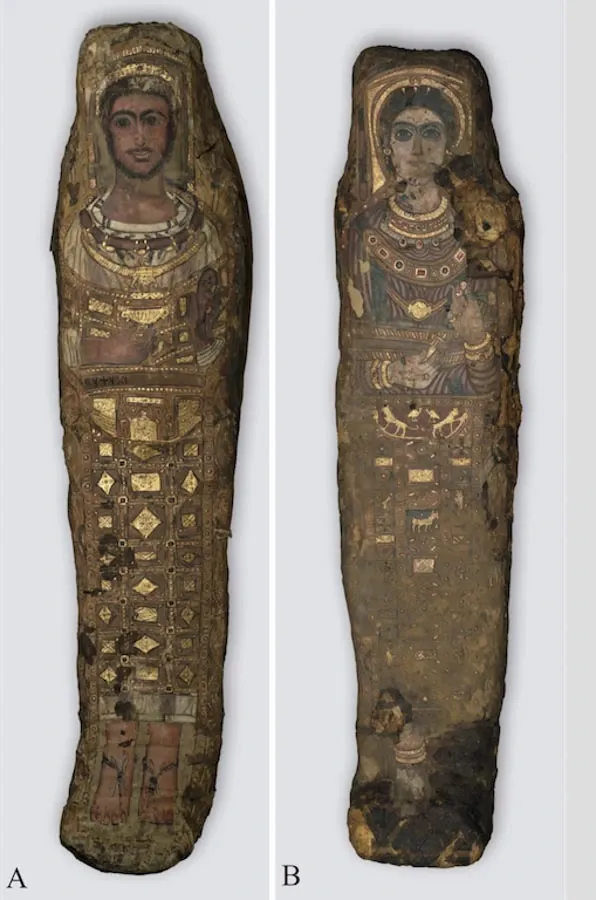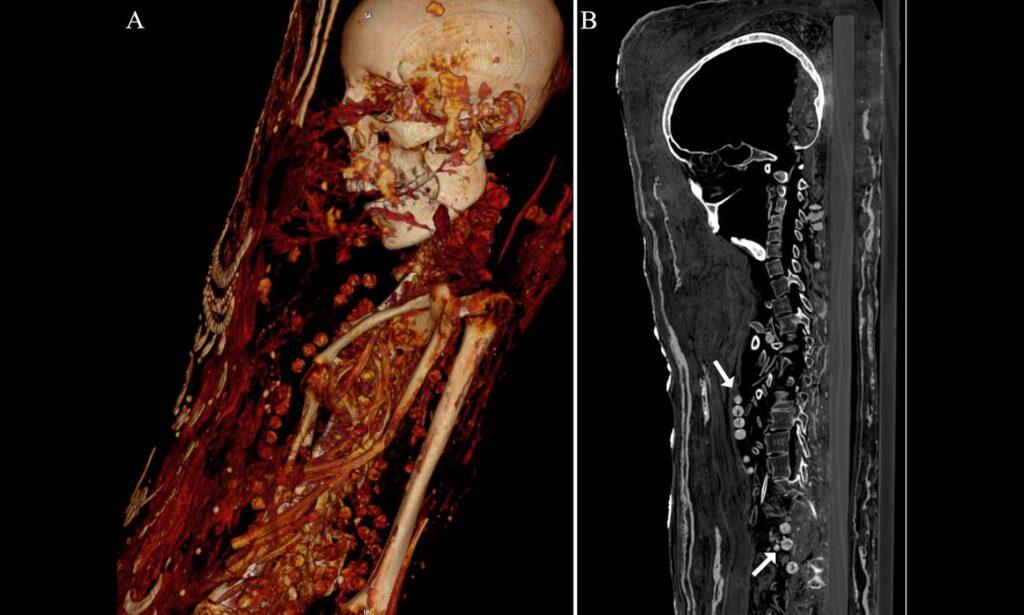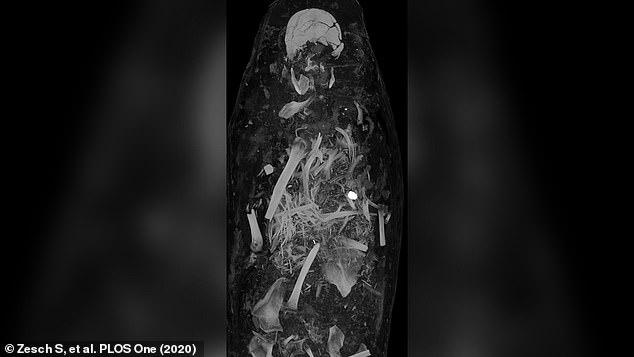Secrets from within the shrouds of three ancient Egyptian mummies, first discovered in 1615, have been revealed for the first time thanks to CT scans.
A man in his twenties, a woman in her thirties and a teenage girl aged between 17 and 19 were inside the plaster-covered remains, buried with jewellery, gold coins and in at least one case – their organs still in their body.

Archaeologists from the Reiss Engelhorn Meuseu, Germany, had to use CT scans to reveal the inside of the plaster coating – rather than risk damaging the remains.
Dating back to between the third and fourth century AD, researchers found all three had some form of medical problem and had died young for the period.
They are the only known surviving ‘stucco-shrouded portrait mummies’ from Saqqara – an ancient Egyptian necropolis – and were first discovered in 1615.
The body is placed on a wooden board, covered in a shroud and then coated in plaster and gold to create a shell which is then painted to show the whole body.
At least one of the three mummies had been buried with their organs – including the brain – and both females were wearing necklaces, according to the researchers.
Two of the mummies – the man and woman – were first discovered by Pietro Della Valle in 1615 and taken back to Rome, making them the ‘earliest known examples of portrait mummies in Europe,’ according to the study authors.
Archaeologists from the Reiss Engelhorn Meuseu, Germany, had to use CT scans as, unlike other mummies, the bodies were coated in a hard plaster shell – not wood

The teenage girl was on display at the Museum of Egyptian Antiquities in Cairo when it was put through a CT Scan by the researchers – there is no indication the trio were connected to one another in life.
CT scans revealed the mummies had been interred with items thought to be useful in the afterlife, including coins designed to pay for passage across the River Styx.
All three of the mummies had medical problems, as revealed by the CT scans – from arthritis to a tumour and all of them died at relatively young ages.
The man died between the ages of 25 and 30, was about 5ft 4in and some of his bones were broken and jumbled – possibly due to someone trying to unwrap him

The man died between the ages of 25 and 30, was about 5ft 4in and some of his bones were broken and jumbled – possibly due to someone trying to unwrap him.
His brain was not preserved but there was ‘no evidence it had been removed through his nose’ as is usually the practice for mummification, authors wrote.
They found two metal objects with the man that may have been seals from the mummification workshop that handled his remains, according to study author Stephanie Zesch,
‘We are quite sure there was no removing the brain or the internal organs’ from these mummies, Zesch told LiveScience.
‘It’s very probable that those mummies were only preserved because of a kind of dehydration with the use of [the desiccation mixture] natron, but there is not a huge amount of embalming liquids.’
The woman was the oldest of the three, having died somewhere between the ages of 30 and 40 and stood at about 4ft 11in tall with arthritis in her left knee.
The girl was between 17 and 19 years old and was about 5ft 1in tall – she had a benign tumour in her spine known as a vertebral hemangioma.
The women were covered in multiple necklaces, and when combined with the shroud they were buried in, it is likely they were from a higher social class.
The findings have been published in the journal PLOS ONE.





